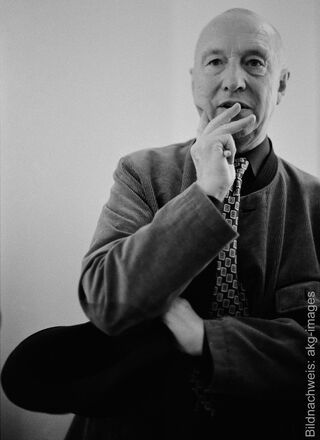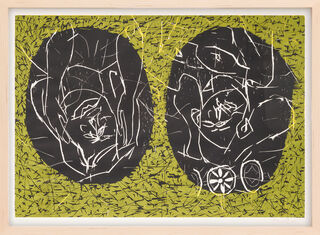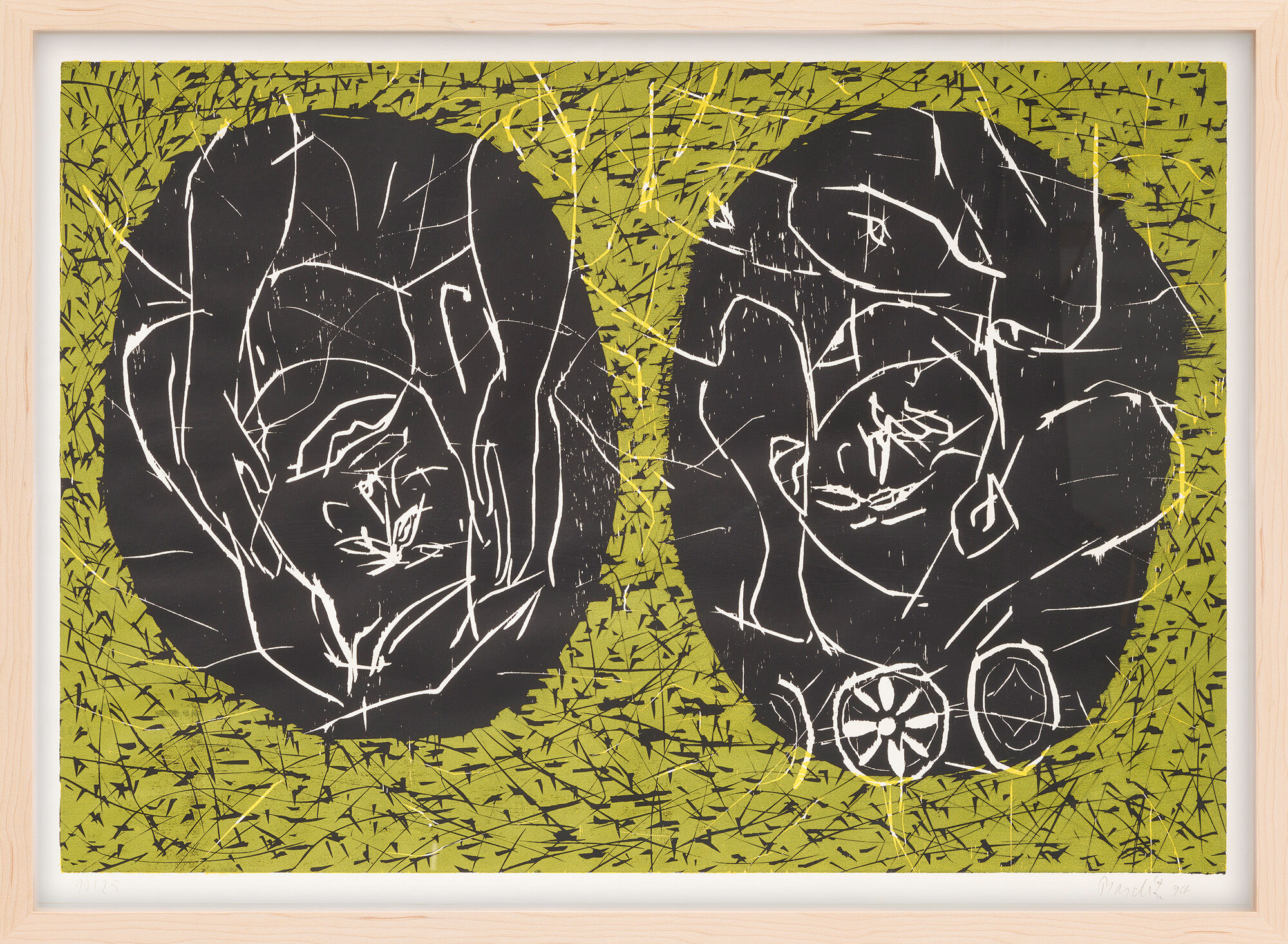Picture "Bread Plate" (1994)


Picture "Bread Plate" (1994)
Quick info
limited, 25 copies | numbered | signed | colour woodcut on paper | framed | size 81.5 x 111 cm
Detailed description
Picture "Bread Plate" (1994)
The large-format woodcut captivates with its clear, almost archaic strokes. In typical Georg Baselitz style, the motif is turned upside down.
On closer inspection, the construct of lines in front of the dark, oval-coloured areas turns out to be two portraits. The figures depicted are probably the artist and his wife Elke.
"For a long time, I said I couldn't paint my wife, who I love very much. I only learned to do so when I started working upside down," Georg Baselitz recalled a few years ago.
The print offered here is from the cycle of works "Bread Plate", produced in 1994, one of the copies of which is also in the collection of the Musées d'art et d'histoire in Geneva.
Original colour woodcut, 1994. 25 copies on Japanese paper, numbered and signed by hand. Motif size/sheet size 74.5 x 104 cm. Size in frame 81.5 x 111 cm as shown.

About Georg Baselitz
Georg Baselitz, the painter and sculptor born in Saxony, Germany, primarily became popular because his motifs are upside down - this has been his incomparable trademark since the beginning of the 1970s. While searching for "the picture behind the picture" (Baselitz), he creates a completely new perspective.
However, Baselitz not only turns everything upside down in art but also likes to take on the role of the troublemaker and provocateur. He calls artists of the former GDR state (East Germany) "assholes" and does not believe that women can paint and labels the documenta exhibition as "Paralympics".
His rebellious nature also marred the start of his studies: In 1957 he was expelled from the East Berlin Academy of Fine Arts due to "socio-political immaturity" because he modelled his work on a great artist - Pablo Picasso. "There was huge dismay. I always thought Picasso was the great communist. But our party members no longer saw him that way. For them, he was a decadent Western painter, an outdated model. Picasso got me kicked out of school," the painter told Spiegel in 2007.
Shortly afterwards, Baselitz moved to West Berlin, but even there he continued to work against all artistic trends. Instead of abstract painting, he focused on figurative, sometimes dramatic depictions, receiving a lack of understanding and ignorance.
The provocation reached its peak in 1963 with his first solo exhibition, where he presented naked and masturbating men to the prudish Berlin society. Followed by confiscations, investigations by the public prosecutor and plenty of negative headlines in the press. But the general fuss had a pleasant side effect: Overnight, everyone knew who Georg Baselitz was.
Georg Baselitz, who was born in 1938 as Hans-Georg Kern in Deutschbaselitz (now a part of Kamenz, Saxony), is now one of the top artists in the international art scene. His works are exhibited in all the world's major museums and collections. The artist has been honoured with the Kaiserring Art Prize of the City of Goslar, among other accolades. Baselitz taught at the Staatliche Akademie der Bildenden Künste Karlsruhe and the Hochschule der Künste Berlin, and currently lives and works in Inning at the Ammersee.
The field of graphic arts, that includes artistic representations, which are reproduced by various printing techniques.
Printmaking techniques include woodcuts, copperplate engraving, etching, lithography, serigraphy.


